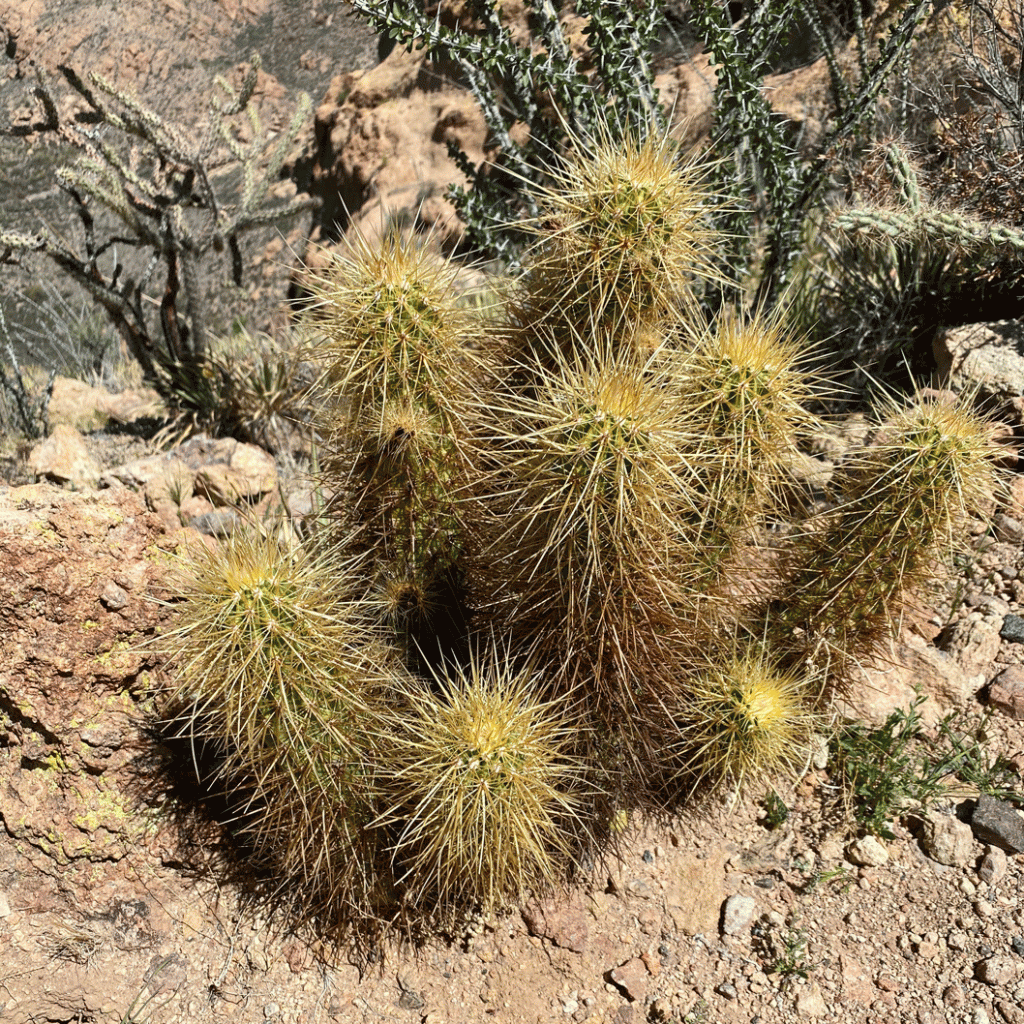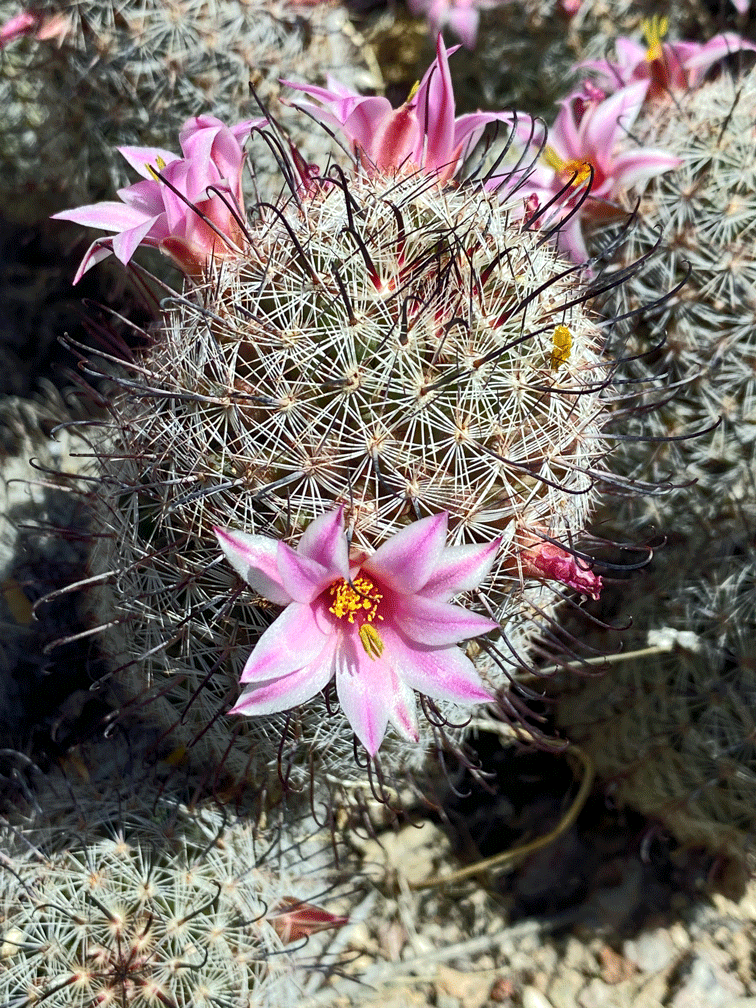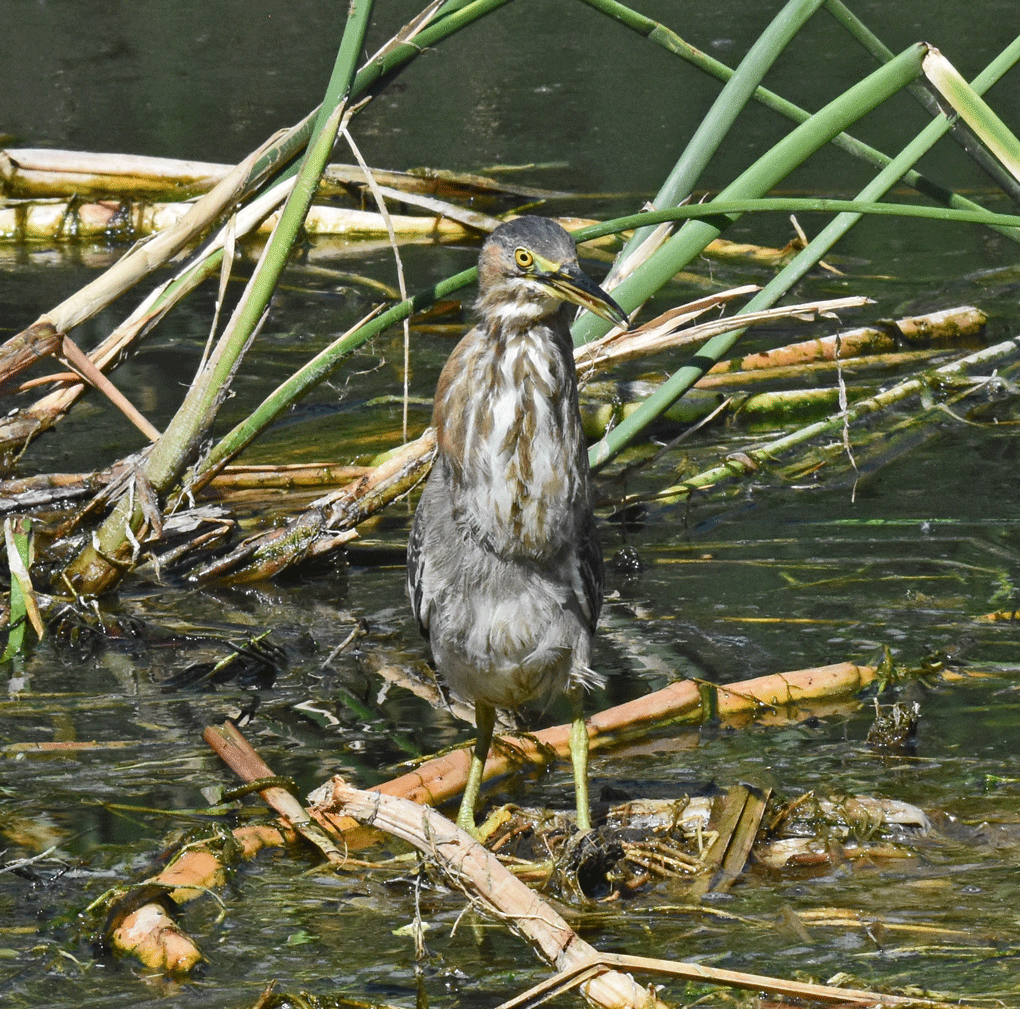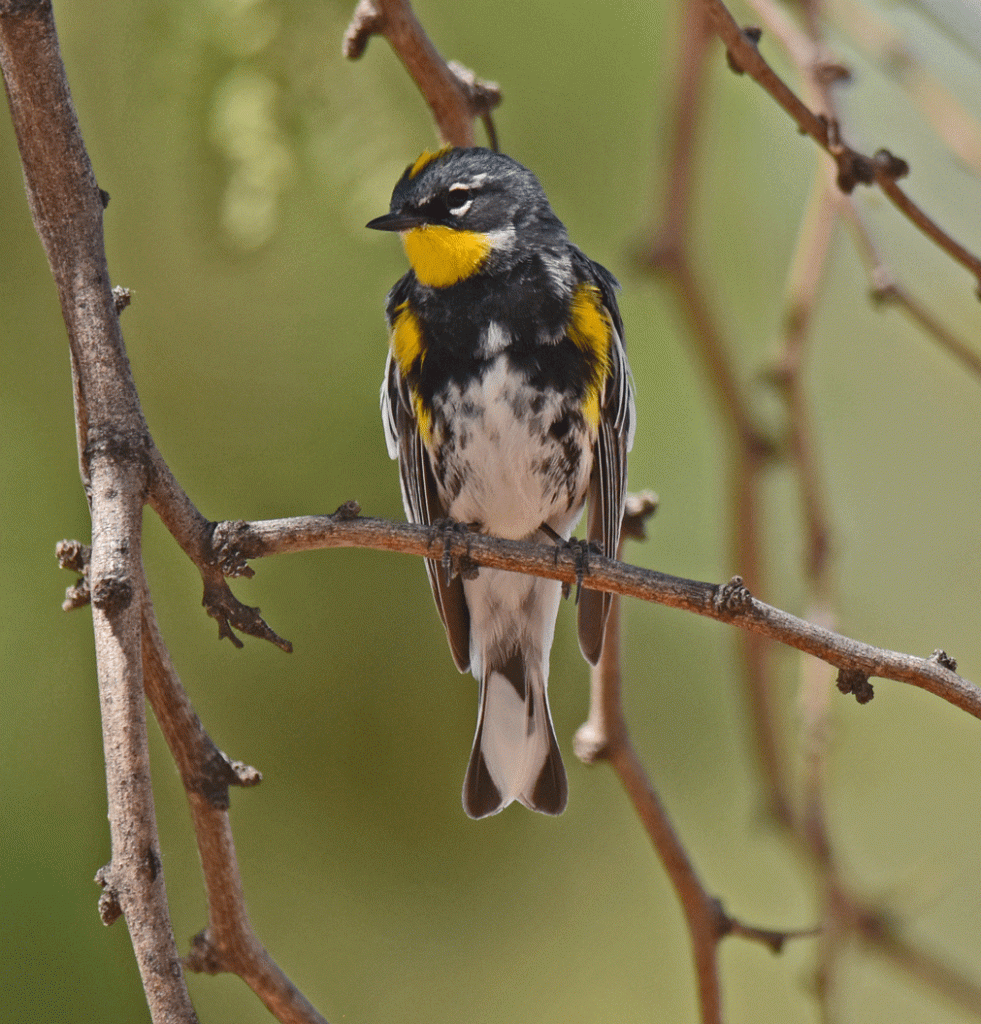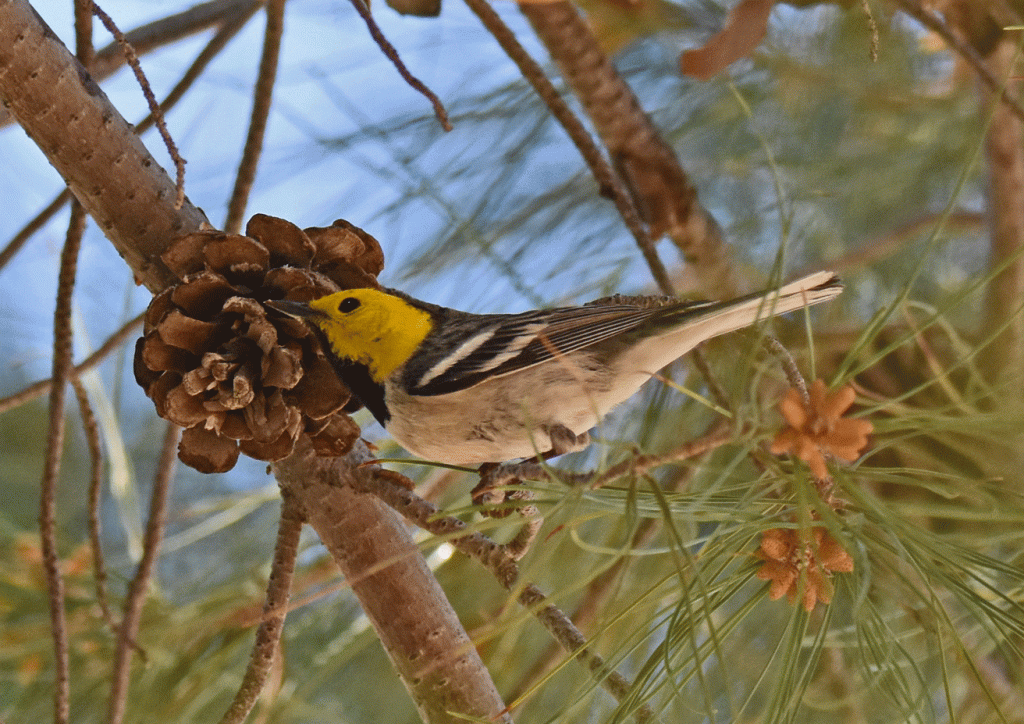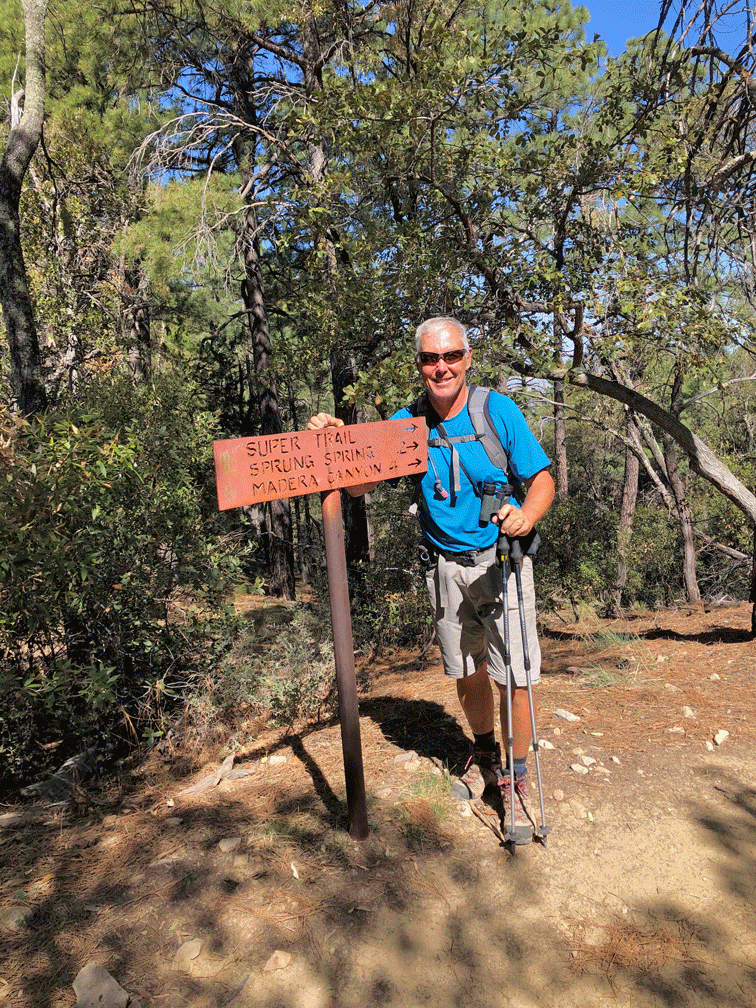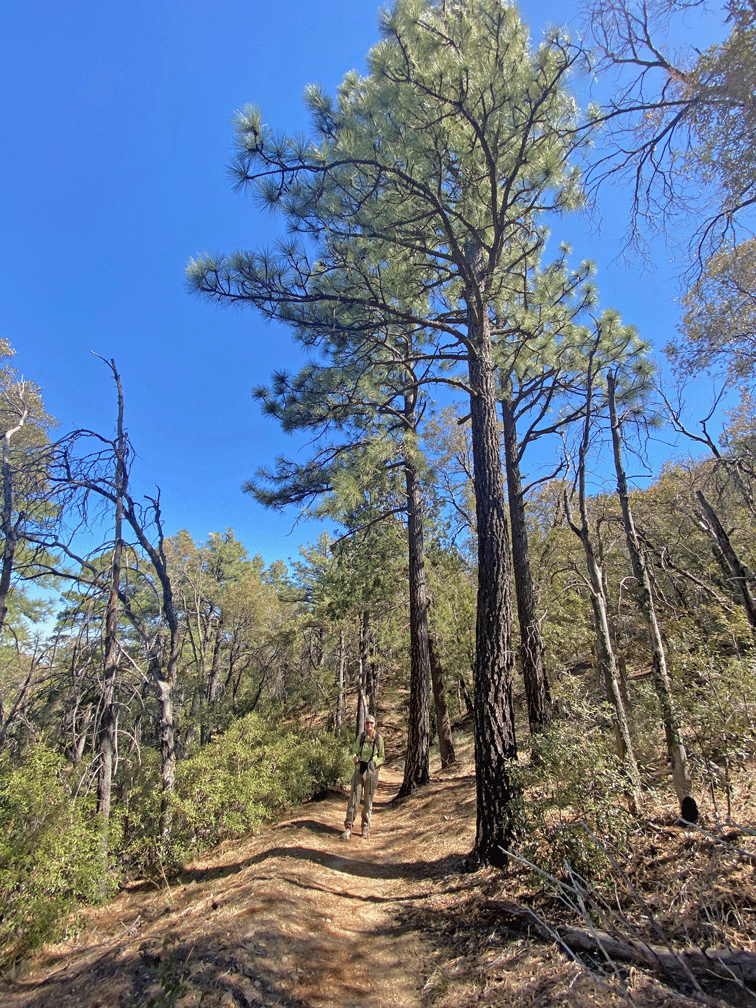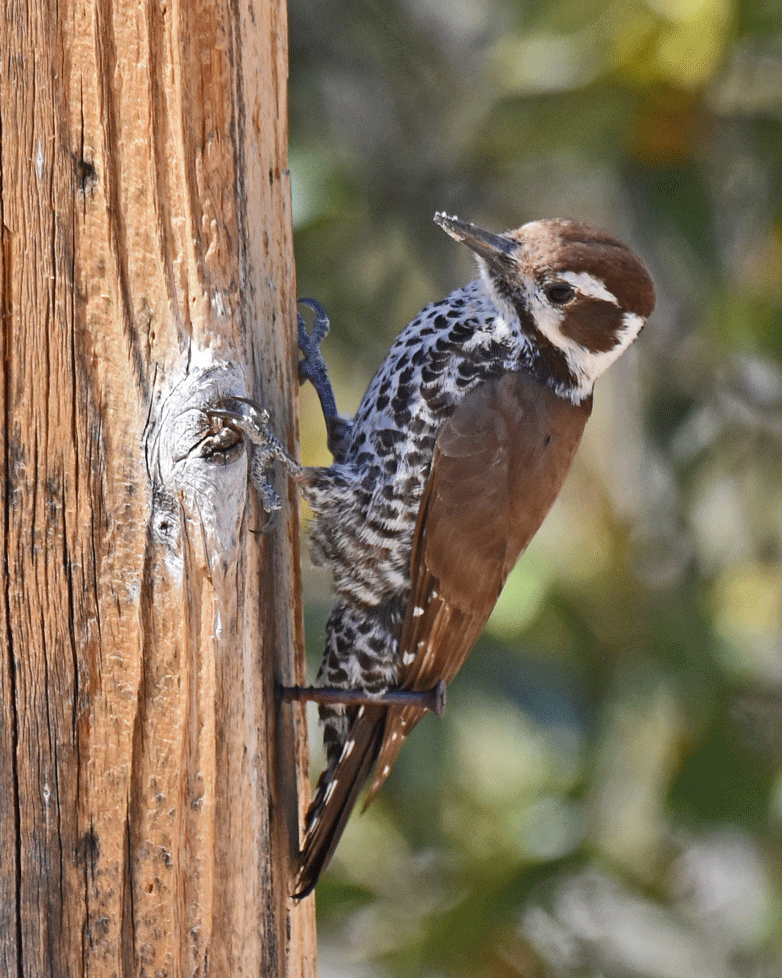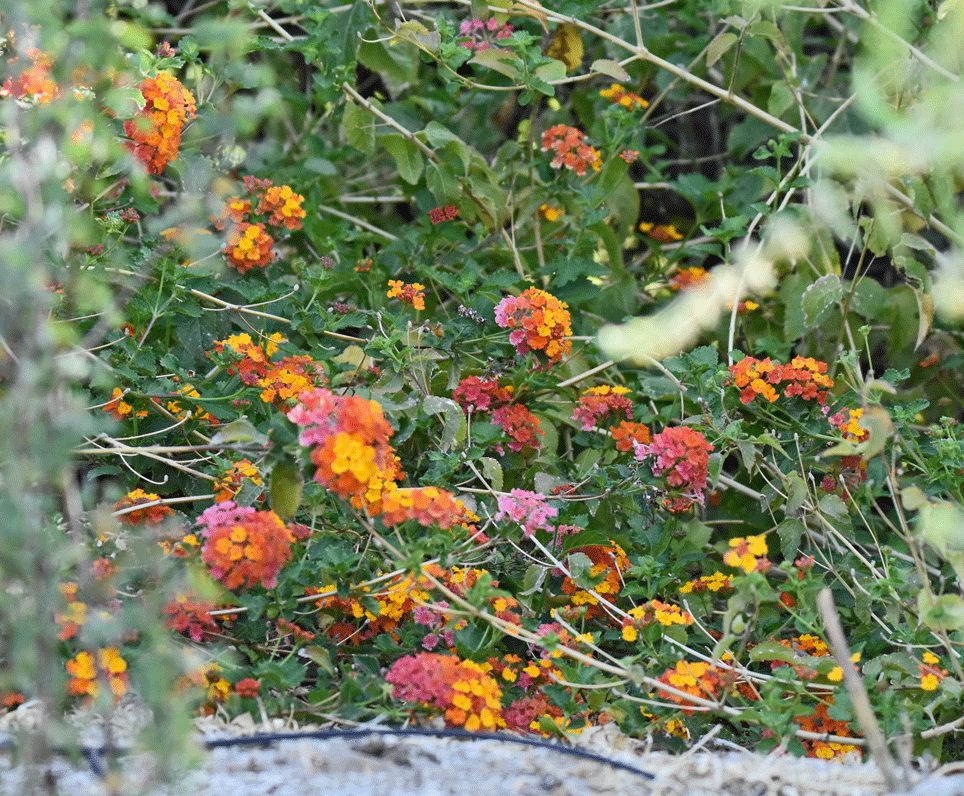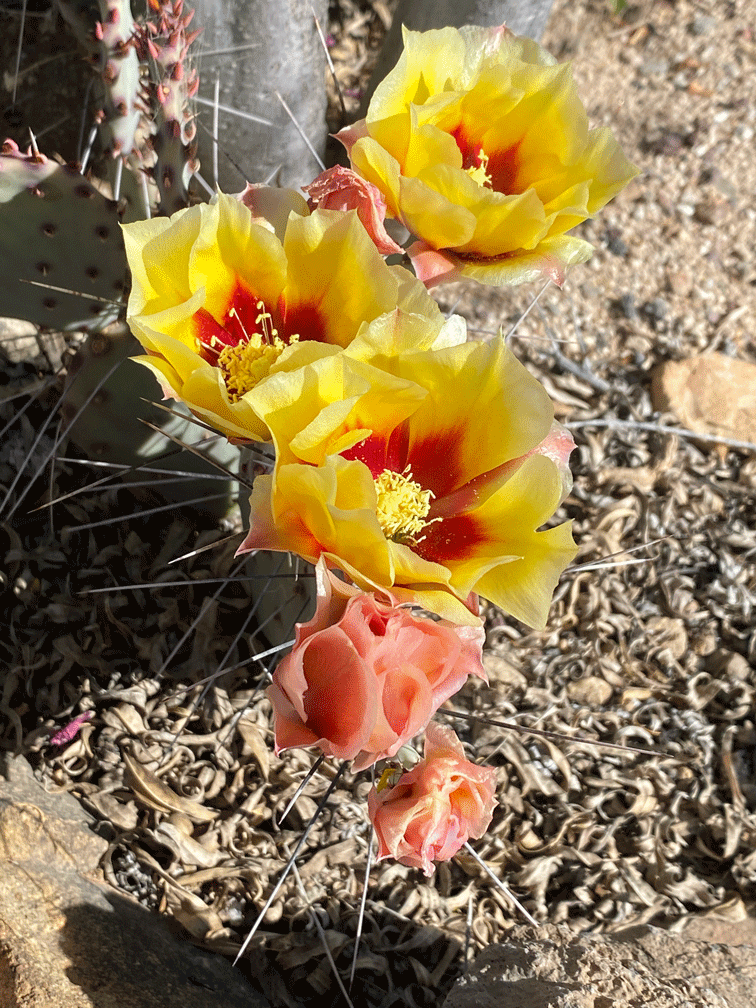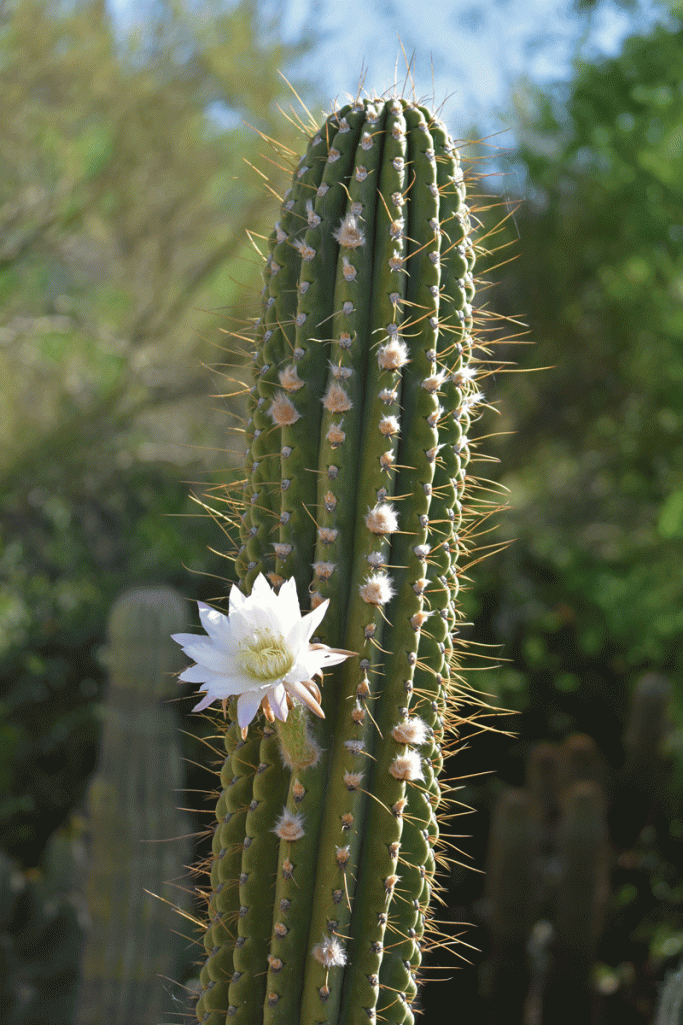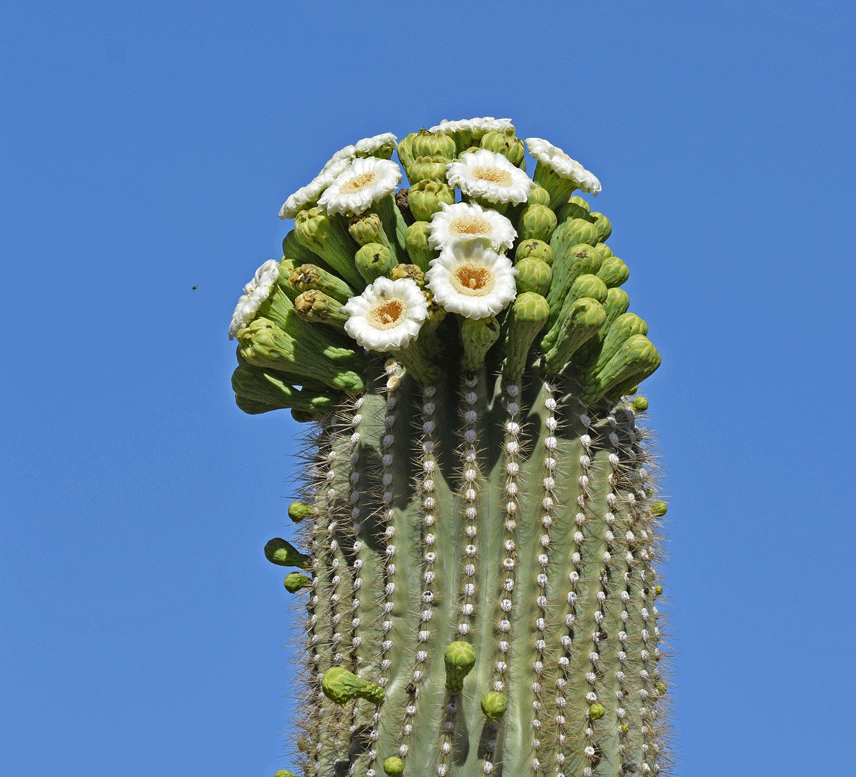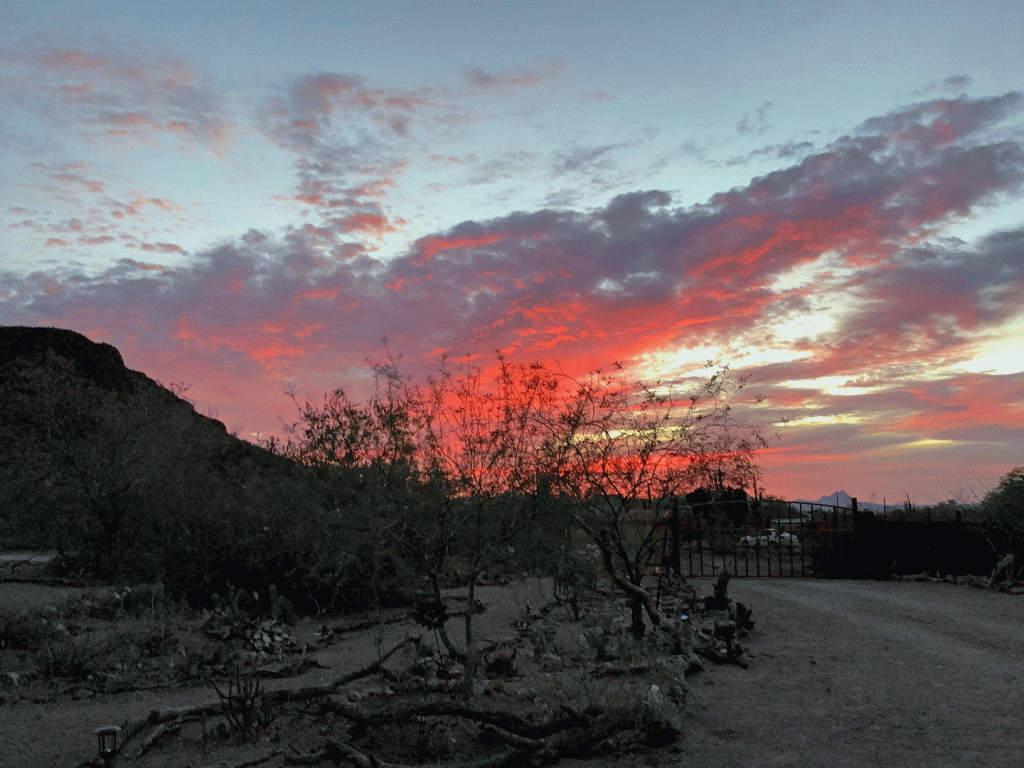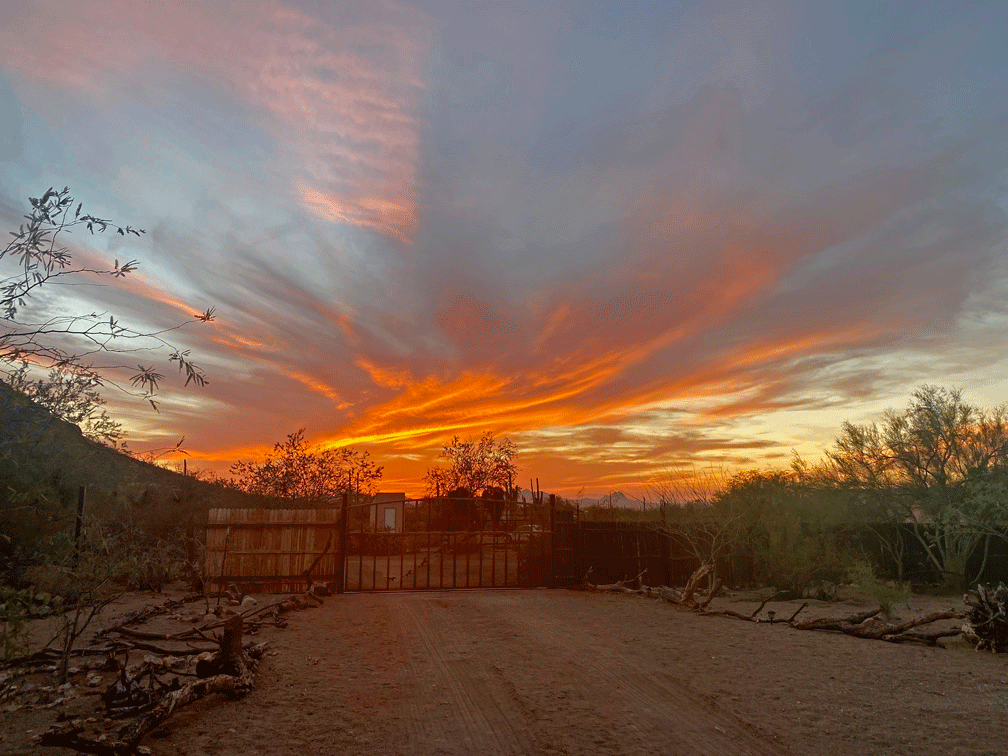We left the Tucson area on April 19 and headed to Page, AZ. Page is at the western end of Lake Powell. We booked three nights in the Wahweep campground and stayed in a large site overlooking the lake.
On the first day we walked on the nature trail near the campground and recorded seventeen species of birds, including a Hooded Oriole, which was common for us in the southwest, but rare for Page, which is just on the Utah border.
Later that morning, we mountain biked the Page Rim Trail, which is a sixteen kilometre loop around the city. The section of trail in the photo is pretty mellow; there are harder bits on narrow sections with drop-offs farther along. Notice how low the lake is; the white area along the water’s edge is the “bathtub ring” and shows how high the water used to be.
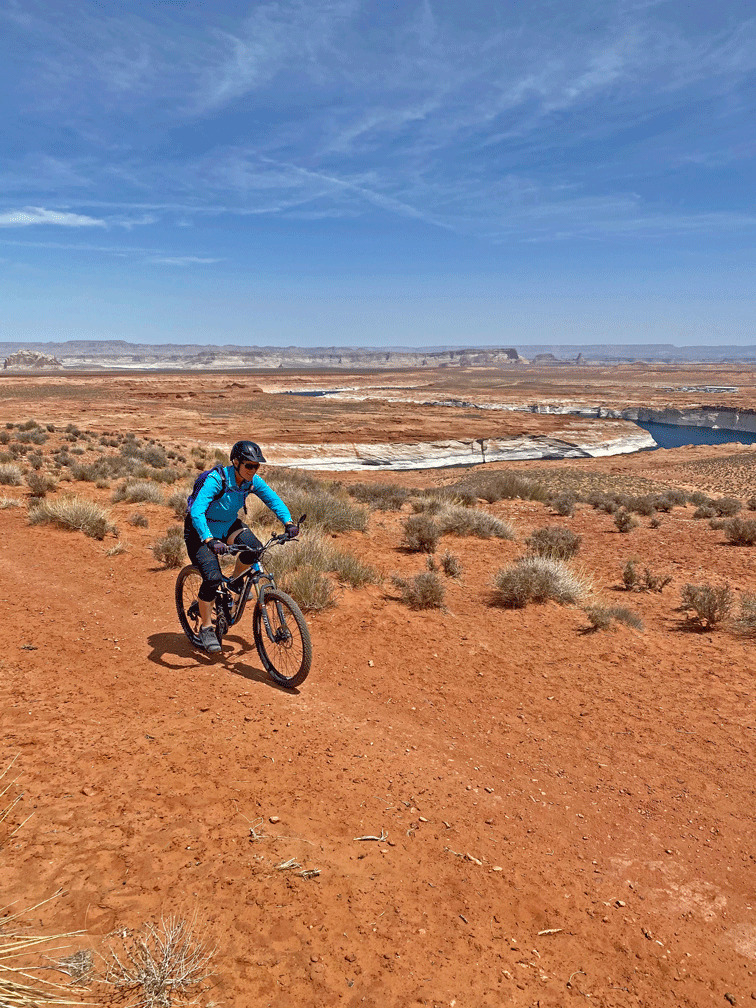
The next day we drove an hour along the highway in Utah, then turned down a “main” dirt road that eventually crossed the border back into Arizona. Soon we turned off and negotiated the sandy roads. Doug likens it to driving in deep snow – don’t stop!
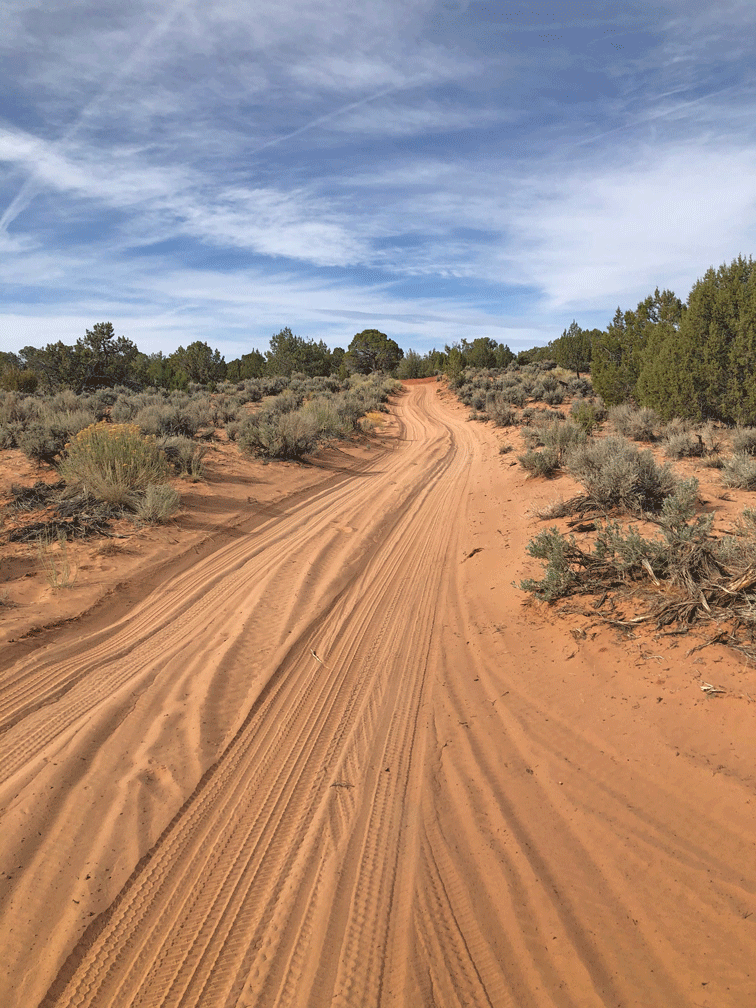
Finally we were at White Pocket, which is a part of the Vermilion Cliffs National Monument. The sign warns, “Routes are not defined. Know where you are going and how to get back.” We had visited back in 2016, so we weren’t worried. It’s basically a large outcropping surrounded by desert scrub so there was a natural boundary.

We took so many photos. It seemed that around every corner there was another amazing view. Here’s a “long” view so you might get a sense of the scale.

Here’s the same formation a little closer.

This is our favourite section. We climbed down this notch twice and up it once, because we kept circling around.

Here’s Doug in almost the same place.
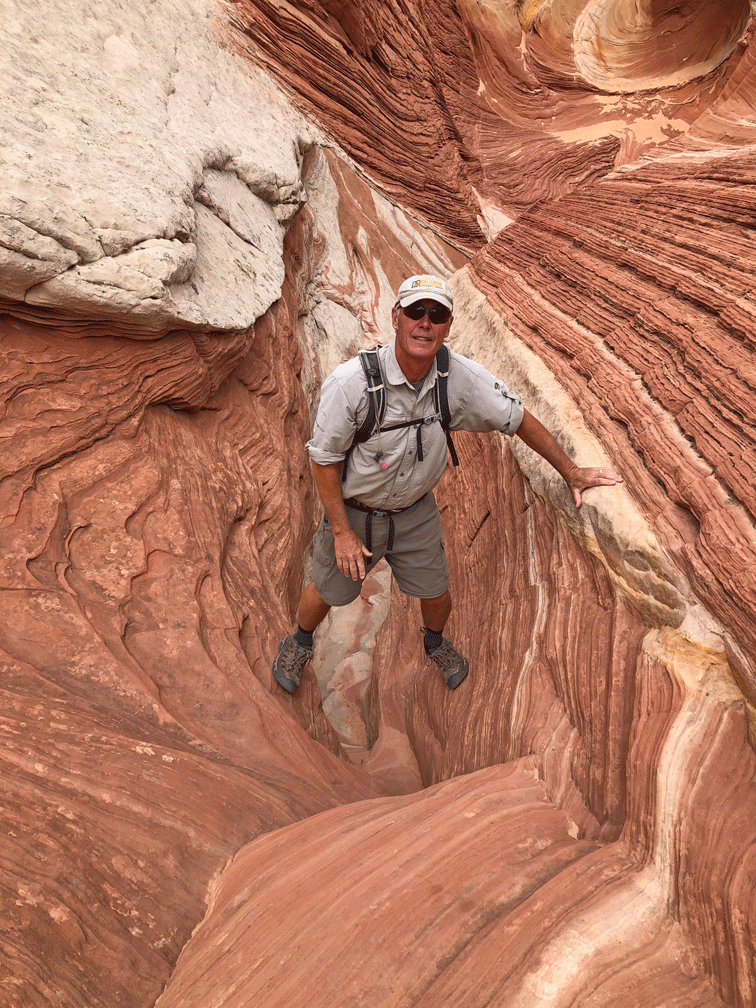
Wendy just a little farther along, going back up to the notch.

We liked the red rock best, but much of the area was white “brain-like” rock. Wendy is taking a photo of some cacti that are surviving in a rather inhospitable place.

This sloping ridged walkway is another favourite spot.

We saw other people at White Pocket, but it was easy to avoid them. We did stop to talk with a guide who had stationed himself while his clients clambered around him. He gave us the scoop to the route to Double Barrel Arch which was on our way home. The arches are visible from the main road, but he told us about walking up an old road behind them so we could get a closer view.

The next day we took the same “main” dirt road but stopped earlier at the Wire Pass trailhead. The trail followed a wash that led to a slot canyon.

It then opened up and there was a short section of red wavy rock.
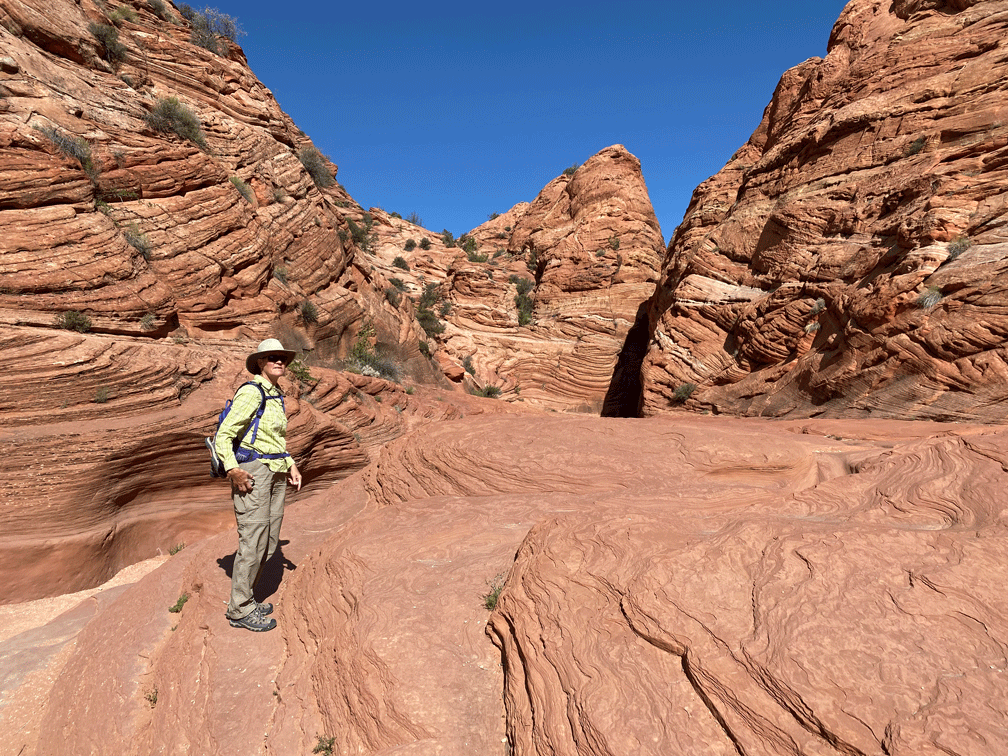
After the next narrow section, there is a wall of petroglyphs where the canyon from Wire Pass joins Buckskin Gulch. The bighorn sheep is Wendy’s favourite.

Now we were in Buckskin Gulch. We chose to turn right and head south (downstream if there was water). The other times that we had explored this direction were short-lived, because there was too much water. This time we brought water shoes but didn’t need them because it was completely dry.

This section would have been very difficult with muddy water covering the rocks.
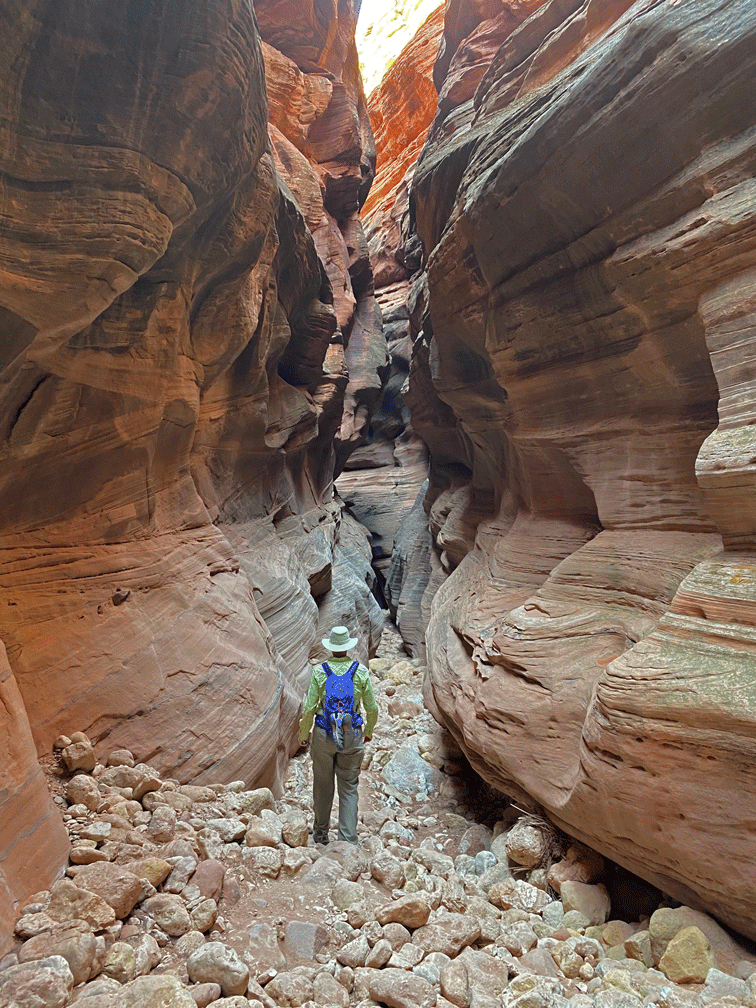
The sun reflecting in an opening farther along makes the rocks seem like they are on fire.

On our last night at Lake Powell we wandered around the campground at sunset. (As you may be aware, every post needs a sunset photo.)

Next stop was Cortez, Colorado. We arrived around noon, just as a snow squall hit. However, it cleared up in a few hours, so we decided to drive up to Mesa Verde National Park. The road is 32 kilometres from the base up to the museum and the start of the hike to Petroglyph Point. That meant we didn’t start hiking until 3:45, which was unusual for us to start that late. The trail traversed the side of Spruce Canyon. There was one tight section.
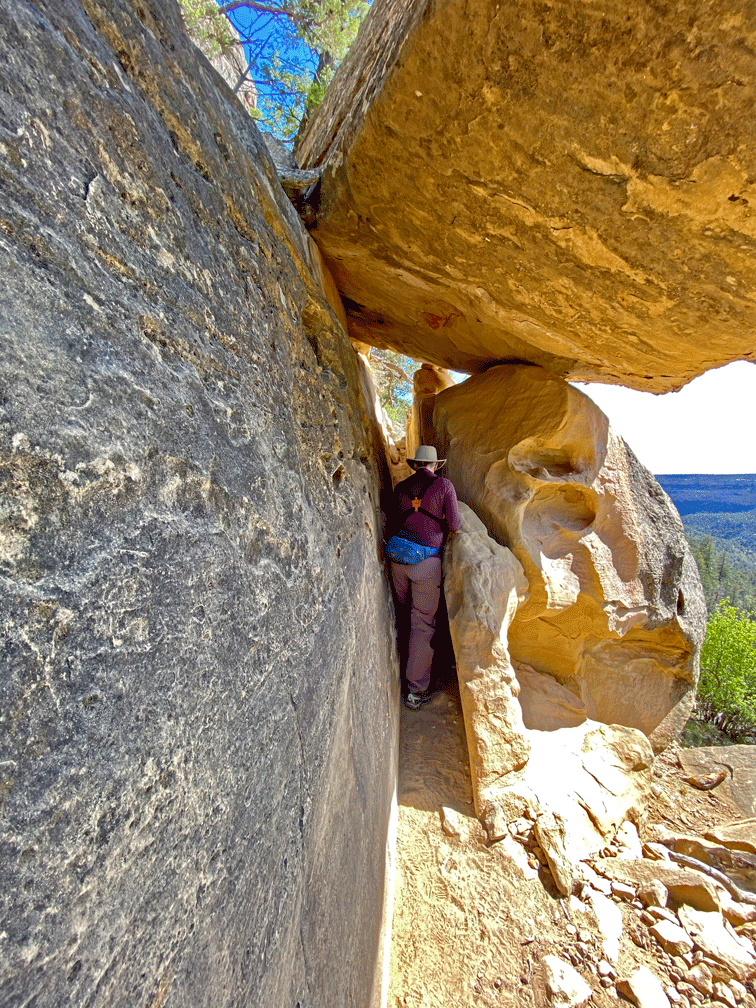
We reached the petroglyphs in about an hour. The late afternoon sun made the panel stand out.
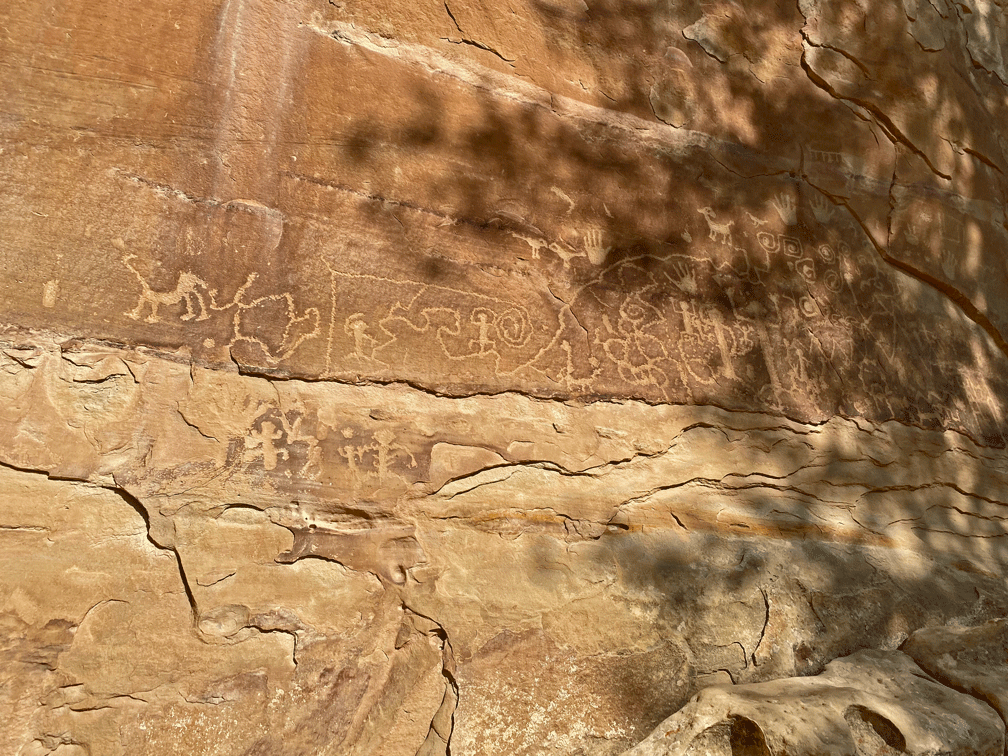
Here’s another view of the panel; the largest one in Mesa Verde.
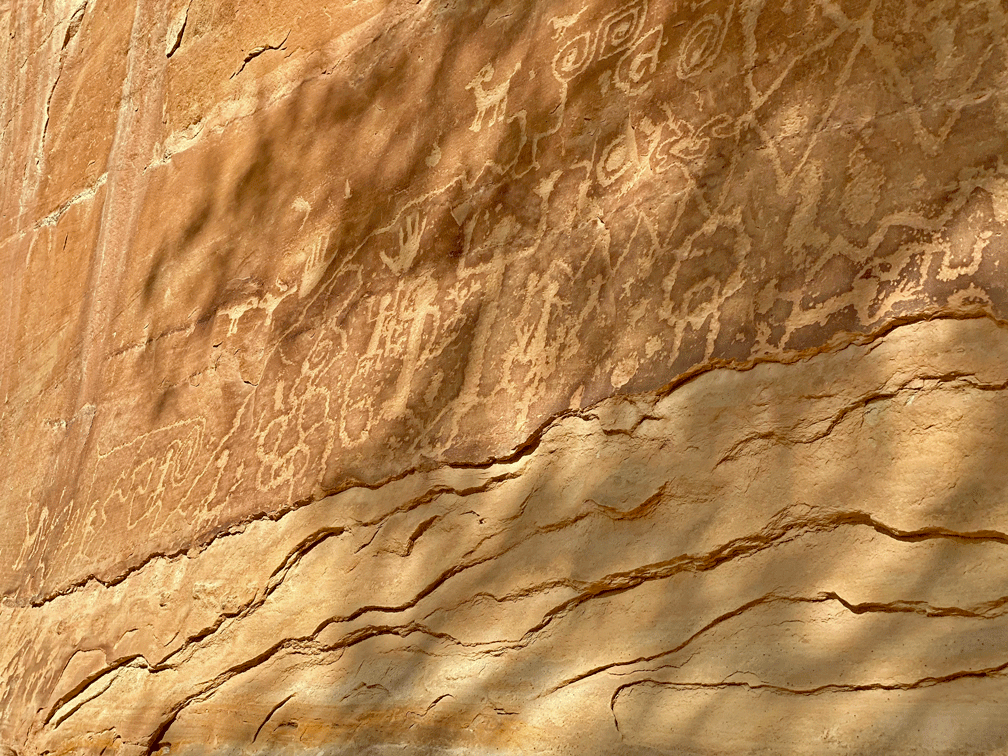
Just above the panel, the trail heads up the cliff band. Steps have been cut into the rock.
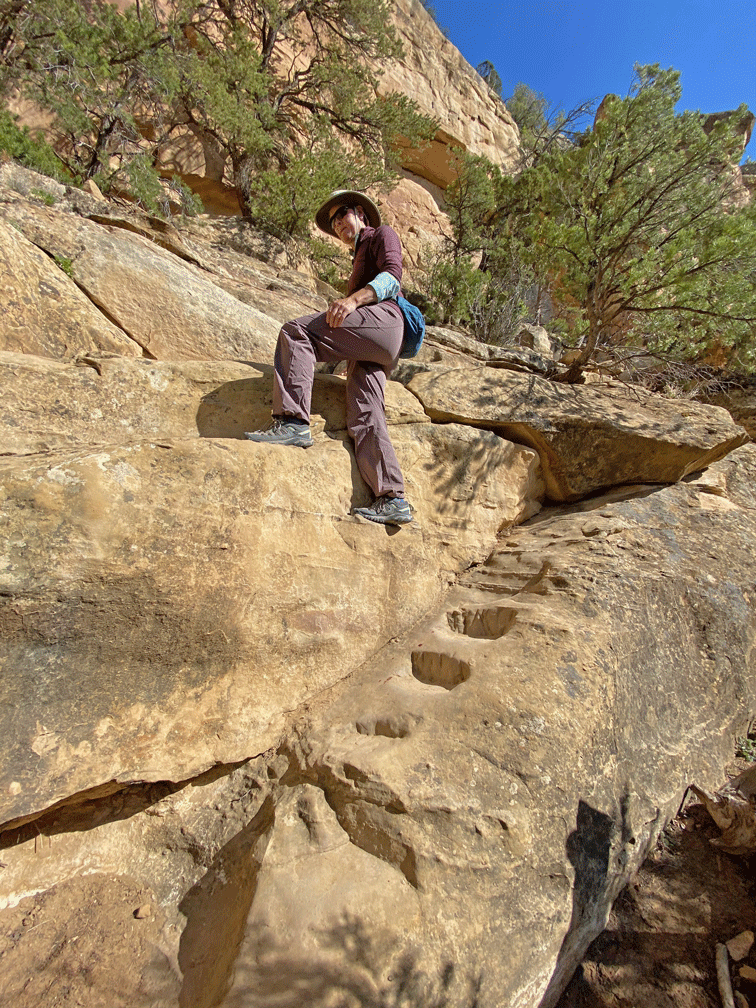
We followed the level trail along the mesa back to the museum. In the photo below, the trail is just out of view in the trees above Spruce House. On a previous trip, we were able to tour the ancient site. Currently it is closed to the public because park staff are stabilizing the access trail.
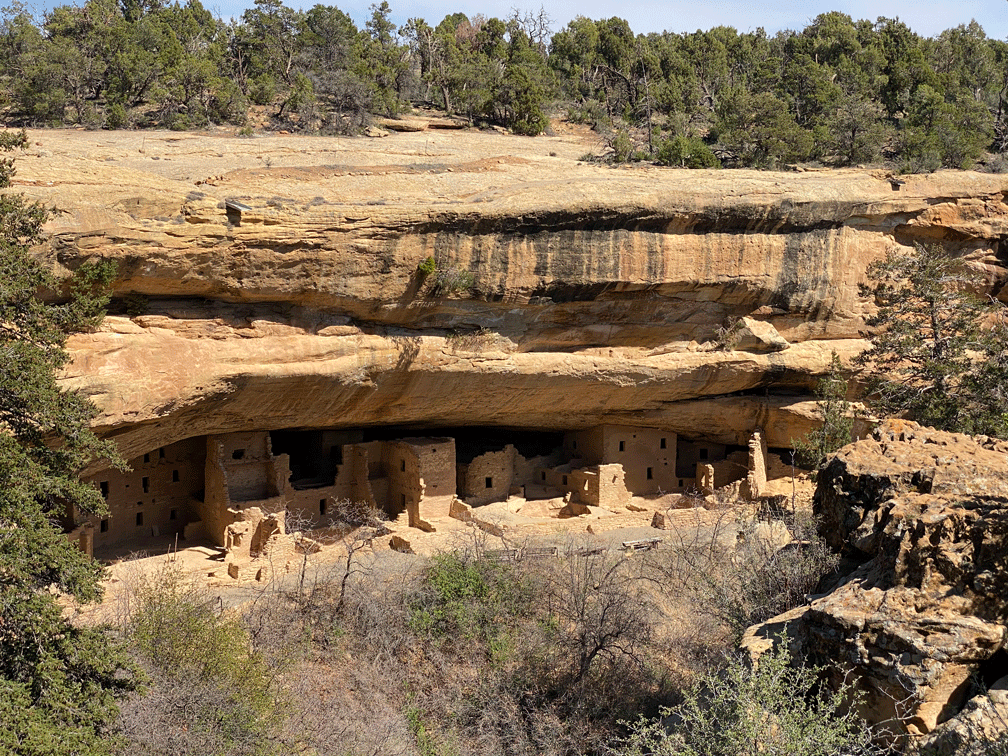
Another day, we did the road tour of Mesa Verde. We got to the Square Tower overlook around 9:30 and had the spot to ourselves.
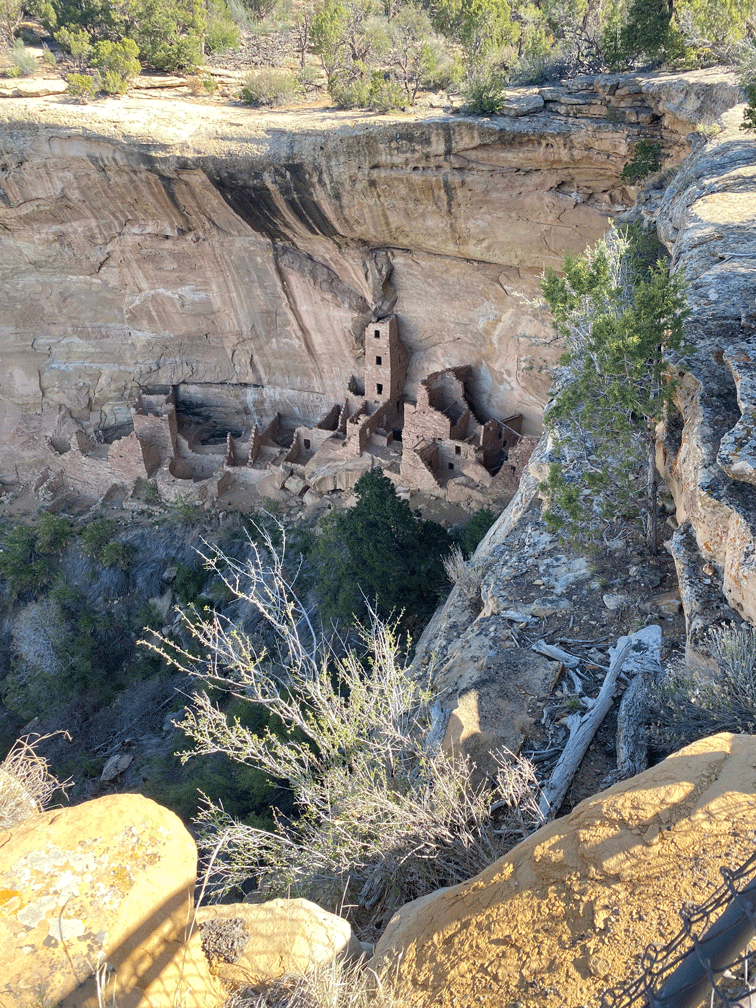
Another big reason to visit Cortez is so we can ride one of our favourite mountain biking trails at Phil’s Trailhead. This section is called “The Ribcage” because it has a multitude of “down and ups” similar to a rollercoaster. Doug stopped to get this photo of Wendy near the bottom of the “whoops.” It was too much fun to stop higher up for a photo.

Then it was time to head home. The first day of driving over Soldier Pass in Utah and through Salt Lake City in the pouring rain, was less than ideal. So the next day we only drove as far as Idaho Falls. We got there early enough so we could get our COVID-19 test done in preparation for crossing the Canadian border.

Our results (negative) were ready by 7:00 the next morning, so we chose to tackle the long drive in one push. Our border crossing went smoothly and after an eleven hour trip, we were home in our own driveway. And now we are through our two week quarantine and ready to enjoy spring in the East Kootenay!
The Redwood is all cleaned out and “put to sleep.” Look for our next post sometime in the fall!






